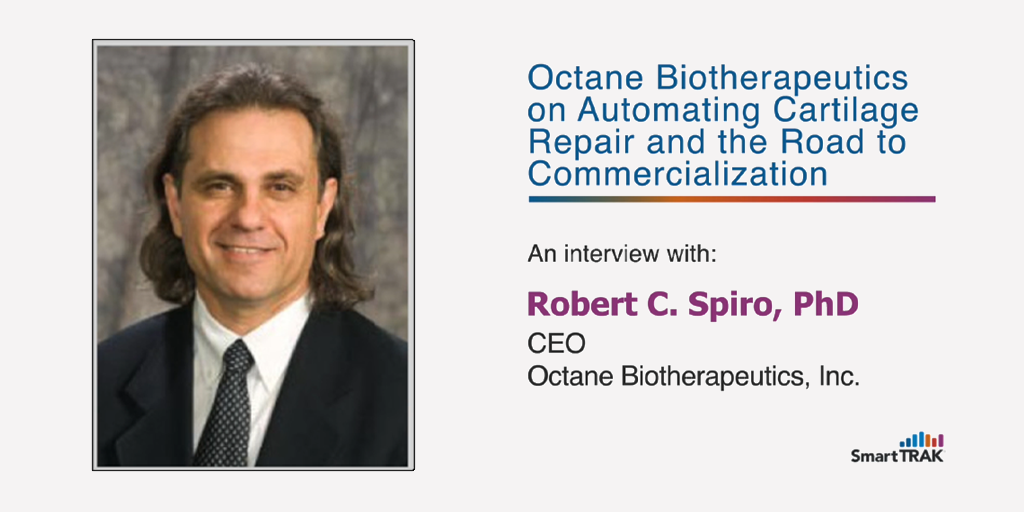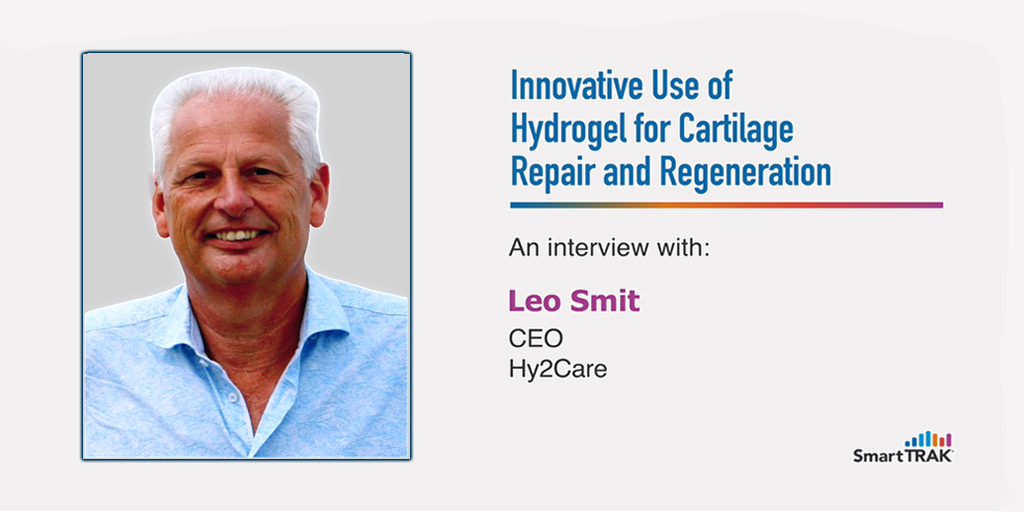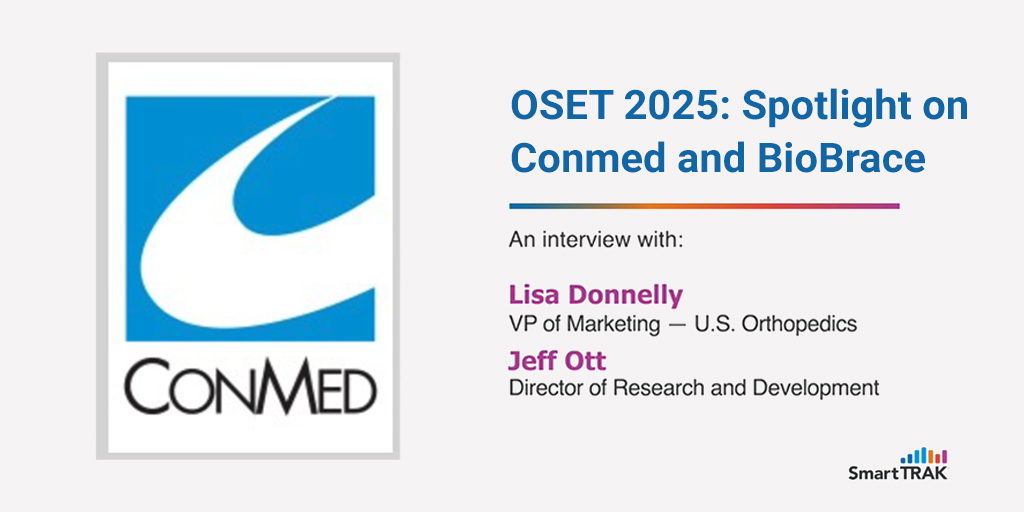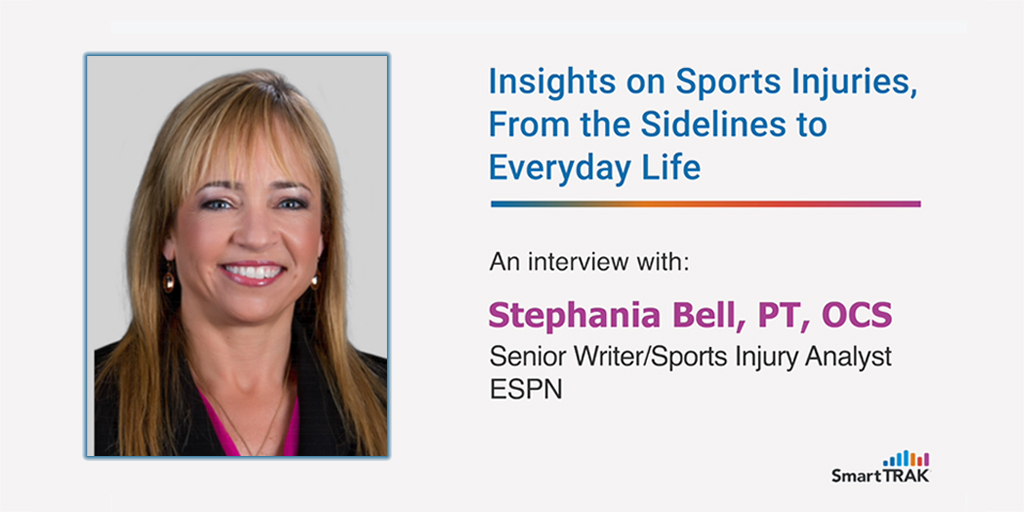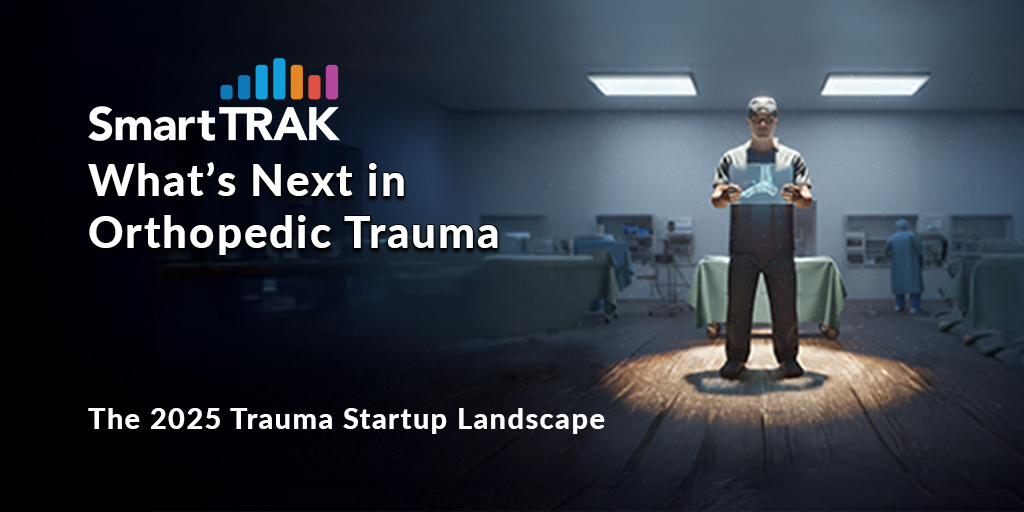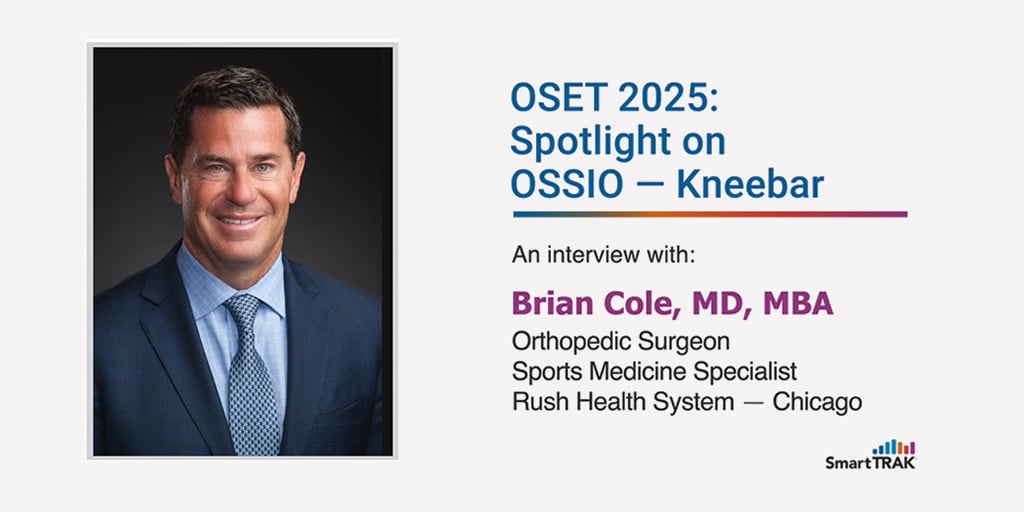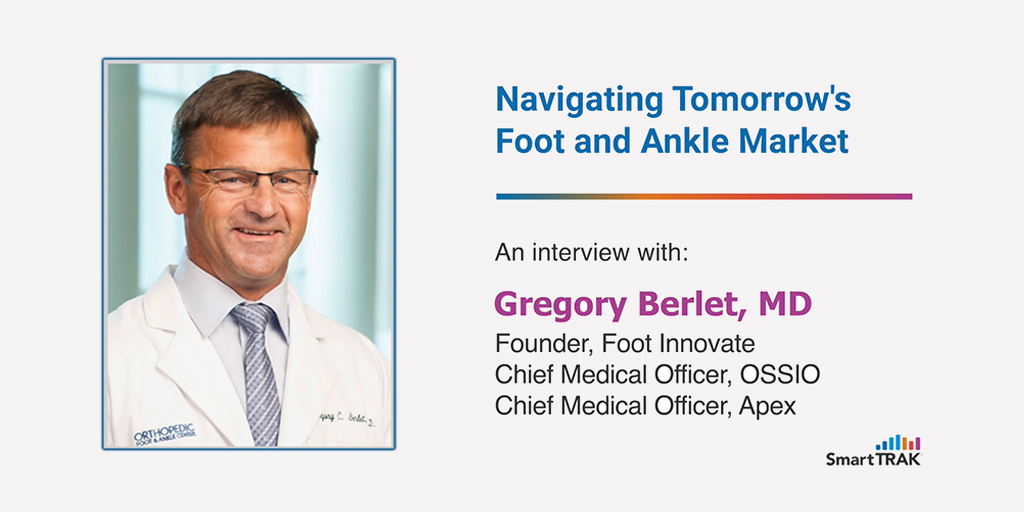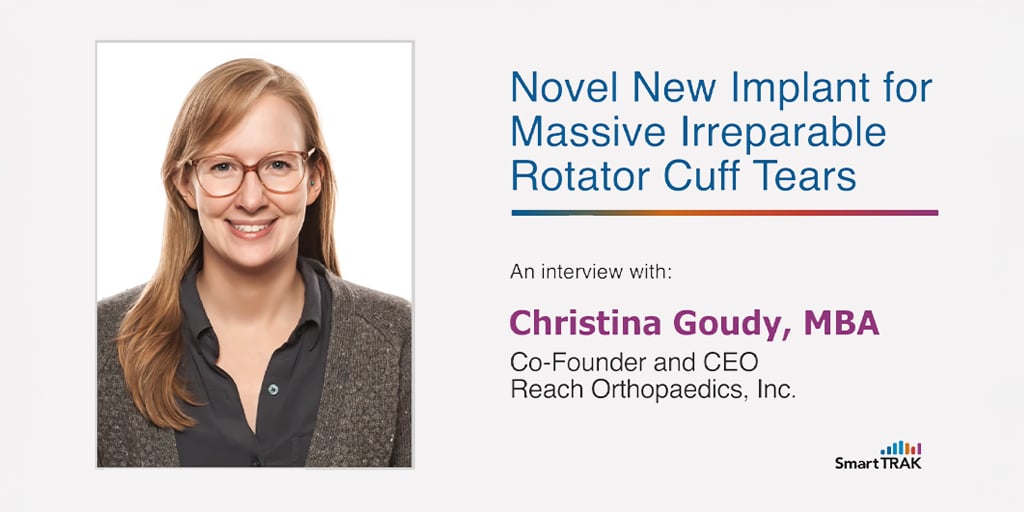The high costs and complexity involved in manual manufacturing hinder the commercial viability of regenerative cell therapies. Octane Biotherapeutics seeks to remove these barriers by integrating its automated "Cocoon" production system with the well-established Novocart 3D and Novocart Inject platforms. SmartTRAK interviews Dr. Robert Spiro, CEO of Octane Biotherapeutics, to explore the company's strategic acquisition of assets from Aesculap Biologics and TETEC AG, and their plan to make a significant entry into the US Cartilage Repair Market.
Click on the following video to learn more (09:37 min). A link to download a complete transcript of the interview is also provided below.
SmartTRAK: Hi, this is David Shepard with SmartTRAK, and I'm here with Dr. Robert Spiro, the CEO of Octane Biotherapeutics. Thank you for taking the time, really appreciate it.
Robert Spiro: Good to see you, Dave. Thank you.
Yes, good to see you as well. Tell me a little bit about Octane and the acquisition of Novocart 3D and Novocart Inject by Octane.
RS: Sure. It's a journey. It really started about 2010, '11, when I first started with Aesculap Biologics in this space. And having been in the cartilage regenerative space through several companies, really knowing that the scale-up of any type of manual culture, cell culture system was a big challenge from a commercial standpoint. We have always been looking for ways to automate this process. We started some on our own, but I encountered this technology with Octane, which was back in 2011—started that collaboration to transfer our manual autologous chondrocyte culture process to an automated system. They had already really started on this Cocoon technology, but we started to marry it to the Novocart program that long ago.
The relationship was there, all along, with the divestiture away from B. Braun Aesculap as they restructured all of their portfolio. It was really a natural progression for Octane to step in and acquire the company, not only Aesculap Biologics, but our sister company in Germany, TETEC AG, that developed the same technology. Octane Biotherapeutics is fully global, both German as well as US. And so, the Cocoon technology is an important step for us to commercialize both Novocart 3D and Novocart Inject for a number of reasons, and anyone in the cell culture space understands that scale up, scale out of those kind of manual process is expensive. It's one of the things that drives the cost of these products so high. So, it's been a great collaboration, and the fact that they stepped in through the acquisition just made a lot of sense for everybody.
RS: The hallmark of this is why it's really ideal for autologous cells. It's this ...
Want to learn more about how integrating the automated "Cocoon" cell production system with Novocart 3D and Novocart Inject platforms will disrupt the complexity and costs of the US Cartilage Repair Market? Click the button below to download and read the complete transcript of our interview with Dr. Robert Spiro, CEO of Octane Biotherapeutics, conducted by David Shepard, SmartTRAK GM/Sr Analyst, Orthobio & Regen.


